The Draugr (2022)
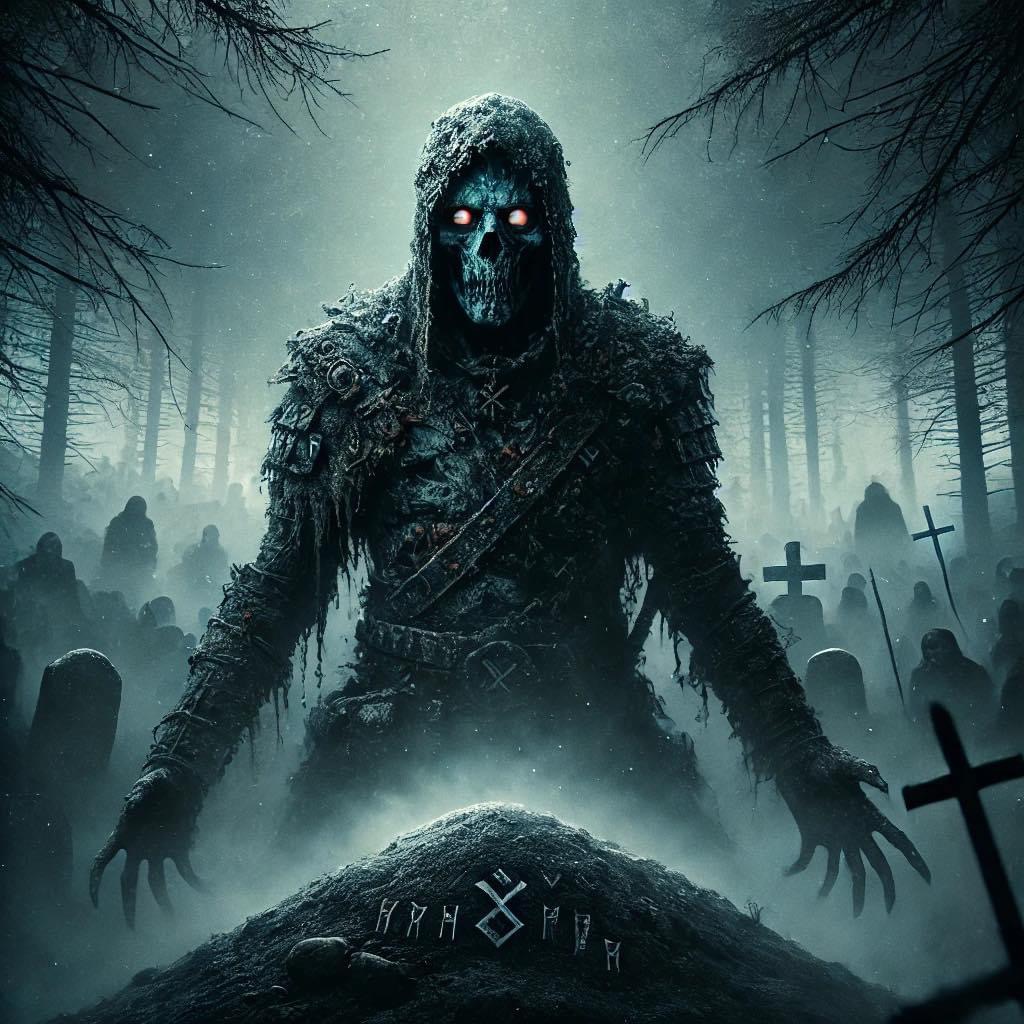
The Draugr (2022), directed by Mike Marvin, blends elements of horror, Norse mythology, and psychological thriller to create a dark, atmospheric tale of survival and ancient evil. The film is set in the harsh, isolated wilderness of Iceland, where a group of adventurers encounter the terrifying Draugr, a revenant from Viking folklore known for its malevolent nature and supernatural powers. This low-budget indie horror film takes advantage of its haunting setting and taps into Viking mythology to create a unique, if sometimes uneven, horror experience.
Suggested videos for you:
Plot Overview
The story follows a group of hikers and researchers, led by archaeologist Dr. Harper Lawson (Rachelle Lefevre), who travel to a remote part of Iceland to explore newly discovered Viking burial grounds. Their expedition is meant to be a straightforward research trip, but things quickly turn dark when the team disturbs an ancient grave and awakens a Draugr—a mythical undead creature that was said to guard the treasures of Viking warriors and kill anyone who dared to enter its tomb.
As the Draugr begins to hunt them down, one by one, the group is forced to fight for their lives. What starts as a traditional creature feature soon takes a psychological turn, as the members of the team experience visions, hallucinations, and paranoia, unsure whether the real danger is the creature outside or their own minds unraveling under the strain of isolation and fear.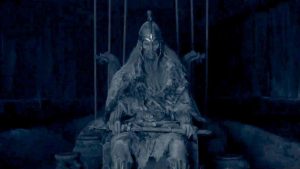
Themes and Symbolism
The Draugr taps into several key themes common to both horror and Norse mythology. The idea of disturbing ancient, sacred grounds and the consequences of meddling with forces beyond human comprehension are at the heart of the narrative. This theme of awakening something primal and uncontrollable is a familiar trope in horror, but here it is filtered through the lens of Viking mythology, which gives it a fresh and intriguing twist.
The Draugr itself is more than just a mindless monster—it embodies the wrath of the past, a symbol of the violence and bloodshed of Viking warriors who believed that death was not the end. In Norse mythology, the Draugr was not only a guardian of treasures but also a metaphor for unresolved vengeance and unfinished business, haunting the living to reclaim what was lost. In the film, this mythological weight adds layers to the creature’s presence, making it more than just a generic antagonist.
Another theme explored in The Draugr is the psychological breakdown of the group. As the isolation and threat of death loom over them, the characters’ mental states begin to deteriorate, leading to infighting, mistrust, and betrayal. This descent into madness is exacerbated by the supernatural elements, as the Draugr seems to manipulate their minds, playing on their deepest fears and insecurities.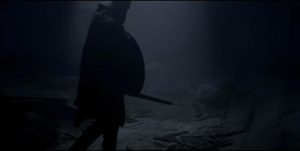
Performances
Rachelle Lefevre, as the lead protagonist Dr. Harper Lawson, anchors the film with a strong performance. She portrays Harper as a determined and intelligent woman, but as the situation spirals out of control, her vulnerability and desperation come to the forefront. Lefevre manages to balance the character’s scientific curiosity with a growing sense of fear, making her a compelling figure to follow throughout the film.
The supporting cast includes a mix of seasoned character actors and lesser-known faces, including Zach McGowan as the grizzled survivalist guide, Magnus, and Christopher Convery as the young assistant researcher, Tom. McGowan brings a rugged, no-nonsense presence to his role, fitting the survivalist archetype, while Convery’s character serves as a more naive and impressionable member of the group, adding to the dynamic of tension and fear. However, some of the secondary characters, such as the overly skeptical researcher played by Jim O’Heir, feel underdeveloped and fall into cliché, which detracts from the emotional impact of their fates.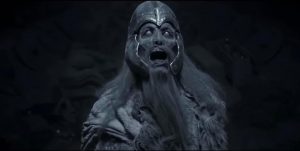
Cinematography and Direction
One of the film’s strongest aspects is its cinematography. Director Mike Marvin, along with cinematographer Benjamin McDonnell, makes excellent use of the Icelandic landscape, capturing the stark beauty and harshness of the environment. The vast, snow-covered plains and jagged mountains create a sense of both awe and dread, reinforcing the idea that the characters are completely isolated, far from help, and at the mercy of the elements. The eerie atmosphere of the barren wilderness mirrors the cold, unfeeling nature of the Draugr itself.
The scenes that take place in the ancient Viking tombs are claustrophobic and filled with tension, with tight camera angles and dim lighting enhancing the feeling of entrapment. Marvin does a commendable job in these moments, building suspense through slow, creeping tension rather than relying on jump scares. The creature’s presence is often felt rather than seen, which adds to the unsettling atmosphere of the film.
However, the pacing can be uneven at times. While the slow-burn approach works to build tension in the first half of the film, the latter half sometimes drags, with repetitive confrontations and character conflicts that feel underwhelming. The psychological elements are intriguing but could have been explored more deeply, as they sometimes feel like afterthoughts in what is otherwise a fairly straightforward creature feature.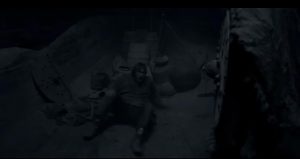
Special Effects and Creature Design
Given its indie budget, The Draugr does a respectable job with its special effects. The creature design is effectively creepy, with the Draugr appearing as a decayed, skeletal figure wrapped in ragged Viking armor, its glowing blue eyes adding a supernatural element that ties it to the myths from which it originates. The practical effects used for the creature are impressive, and Marvin wisely keeps the Draugr in the shadows for much of the film, allowing the audience’s imagination to fill in the gaps.
That said, when the creature is shown in full, particularly in the climactic scenes, the limitations of the budget become more apparent. Some of the CGI enhancements, particularly around the Draugr’s supernatural abilities, feel less polished, and there are moments where the creature’s movements seem stiff or unnatural. These moments do not ruin the film, but they do momentarily break the immersion that Marvin works hard to create.
Criticism
The Draugr is an ambitious film that doesn’t always succeed in its execution. While it does a good job of building atmosphere and tension, some of the character development feels superficial, and the psychological elements are not fully realized. The film introduces interesting ideas about the Draugr’s ability to manipulate the characters’ minds, but it doesn’t explore these ideas as deeply as it could, instead falling back on more conventional horror tropes as the story progresses.
Additionally, the film’s pacing issues in the second half and some underwhelming CGI effects may frustrate viewers looking for a more polished production. The ending, while effective in its bleakness, feels somewhat rushed and leaves certain plot points unresolved.
Conclusion
The Draugr is an atmospheric horror film that stands out for its use of Norse mythology and the stark beauty of its setting. It offers a unique take on the creature feature genre, blending supernatural horror with psychological tension and mythological depth. While it has its flaws, particularly in pacing and character development, it is a commendable effort for a low-budget indie film. Fans of folklore-based horror and slow-burn thrillers will find much to appreciate in its eerie mood and the haunting presence of its undead antagonist.
For those interested in a mix of mythology and horror, The Draugr offers a chilling journey into the ancient and the unknown, even if it doesn’t fully realize its potential.











